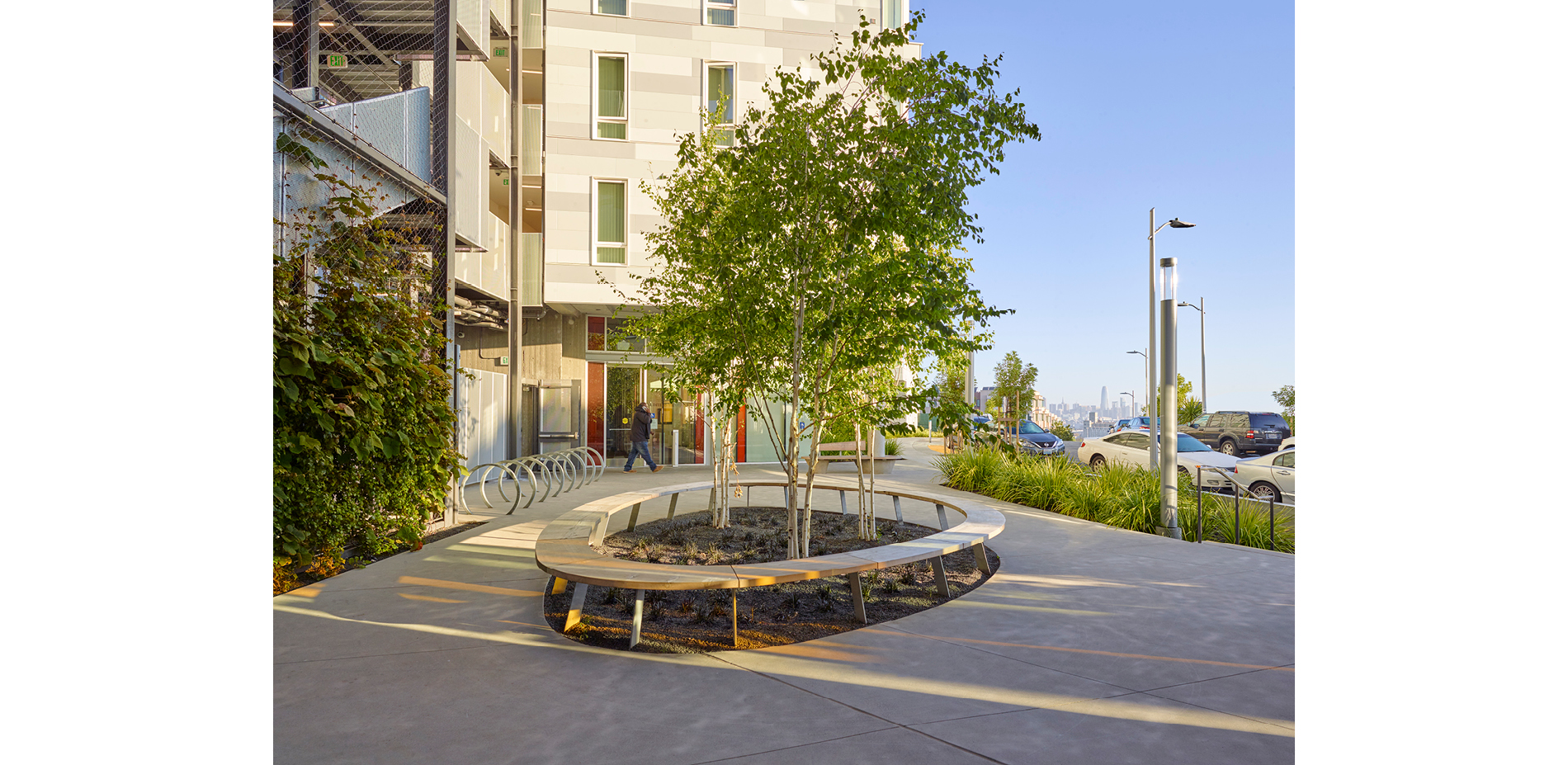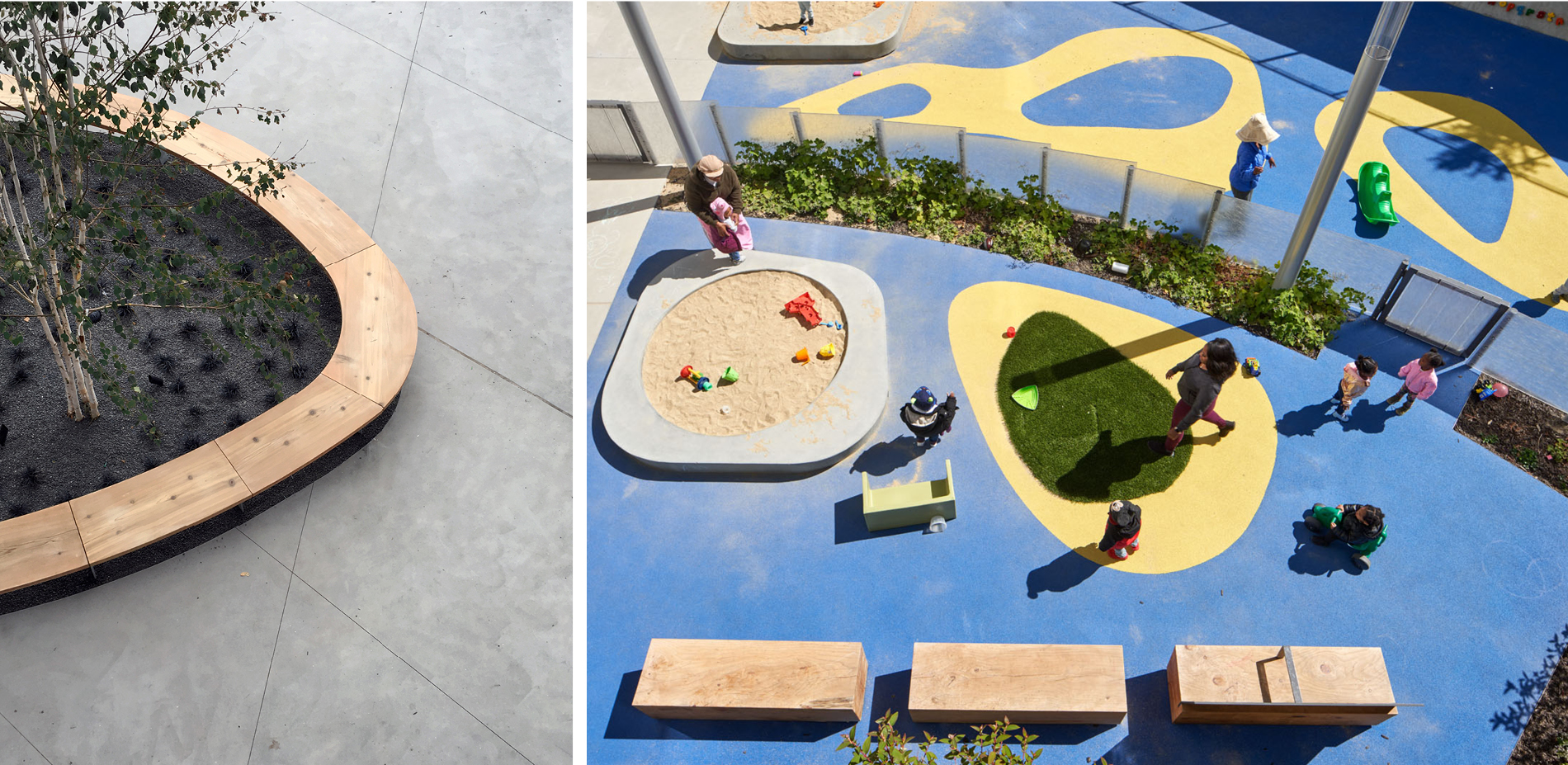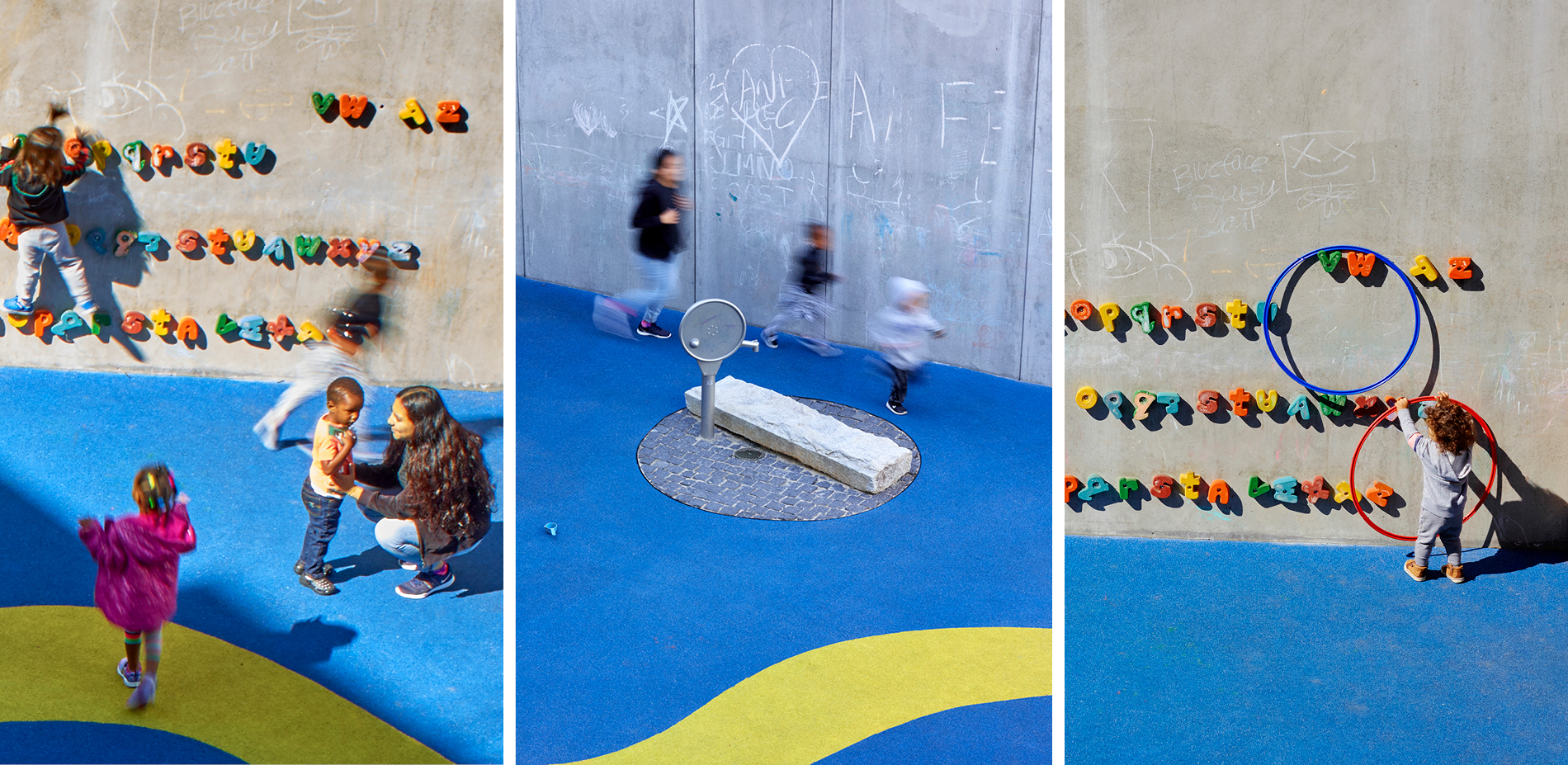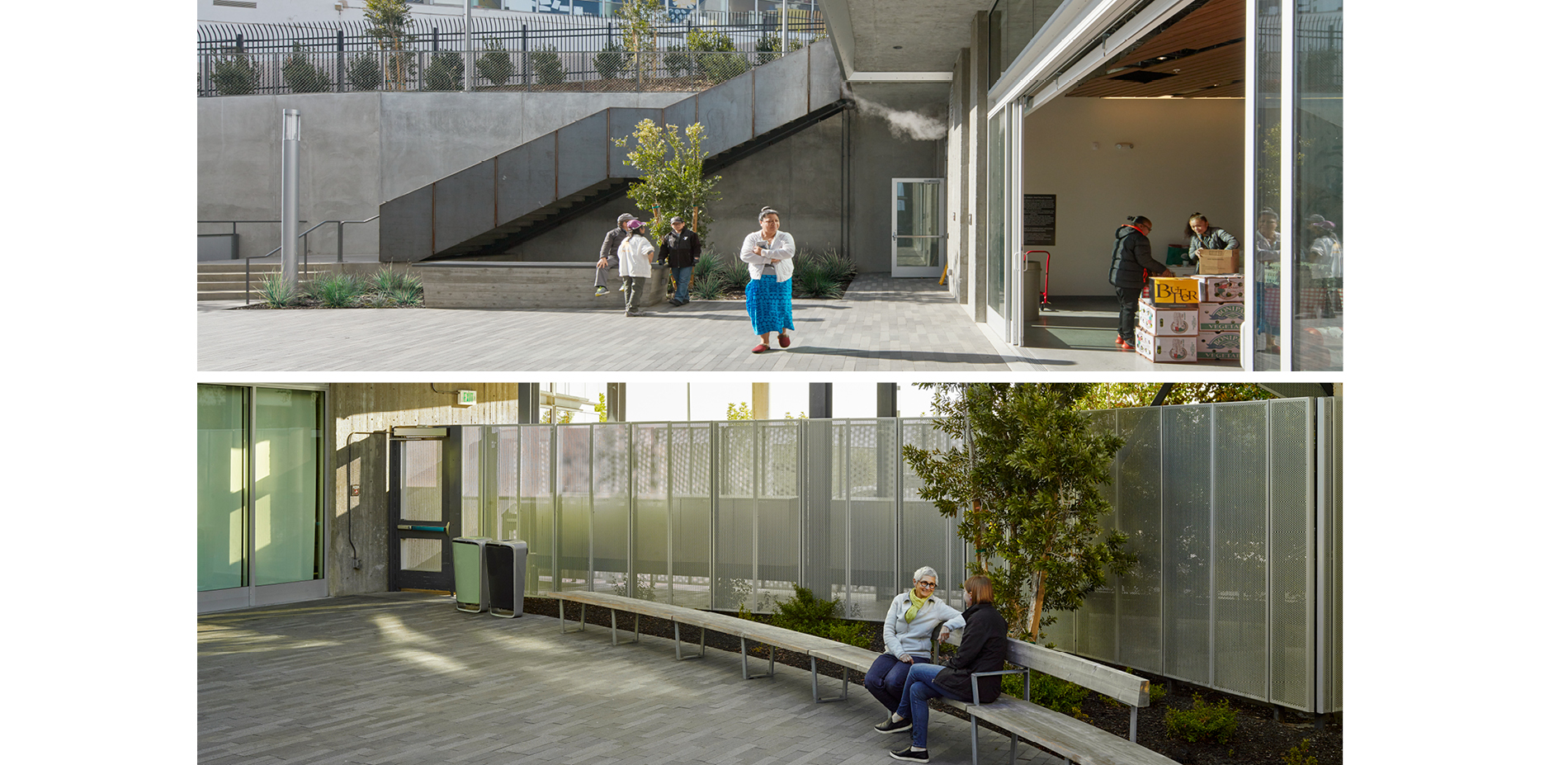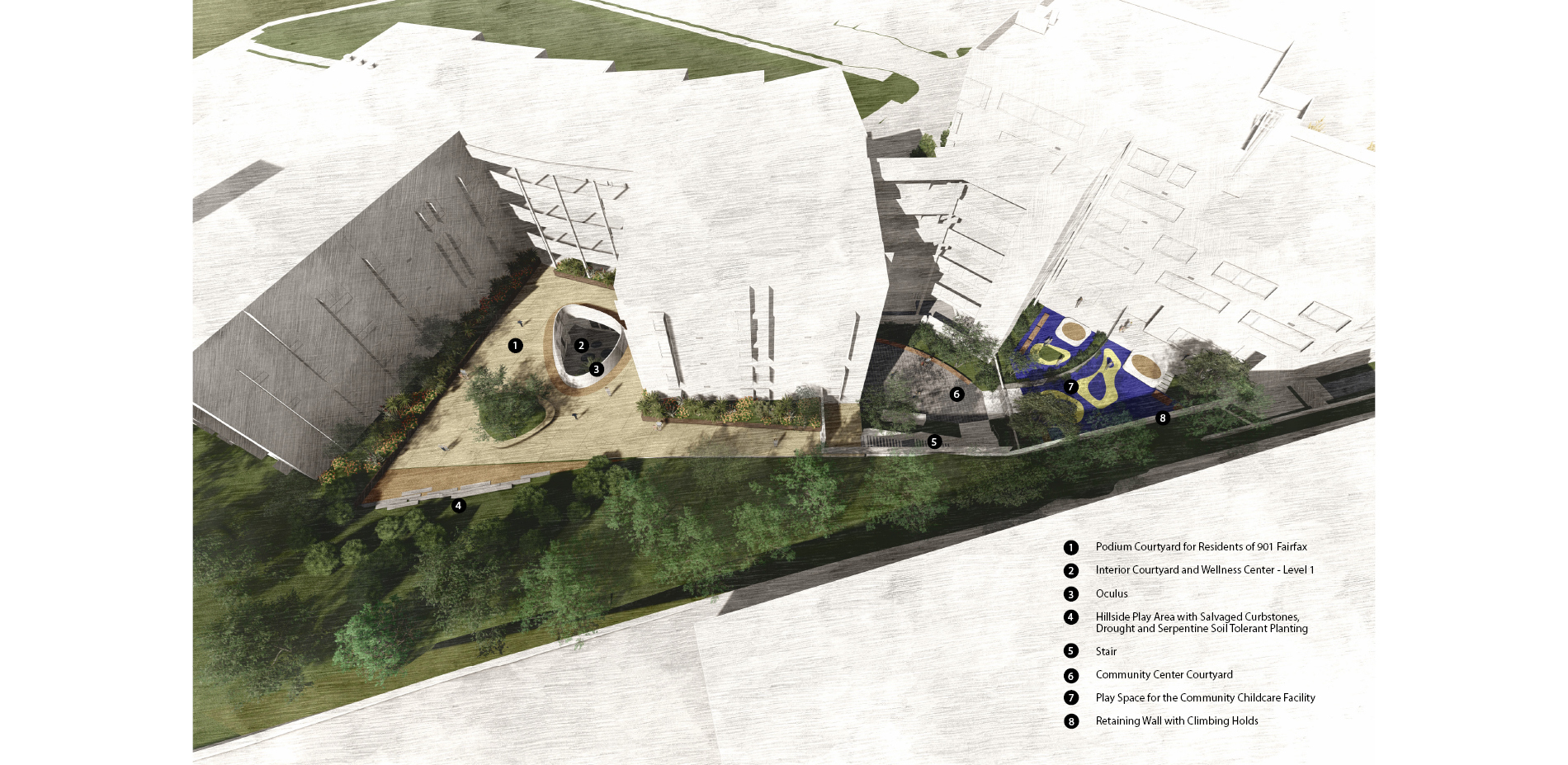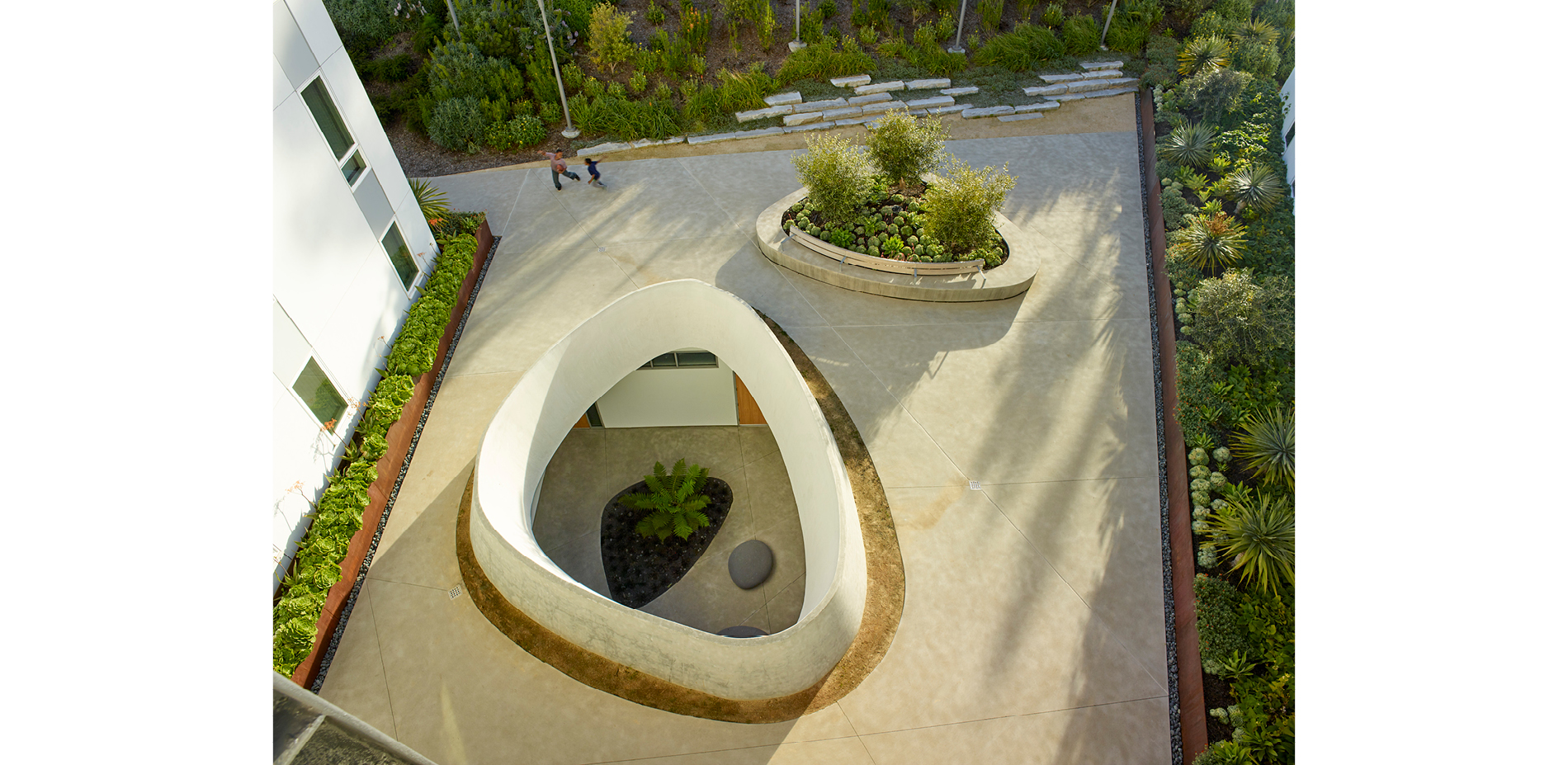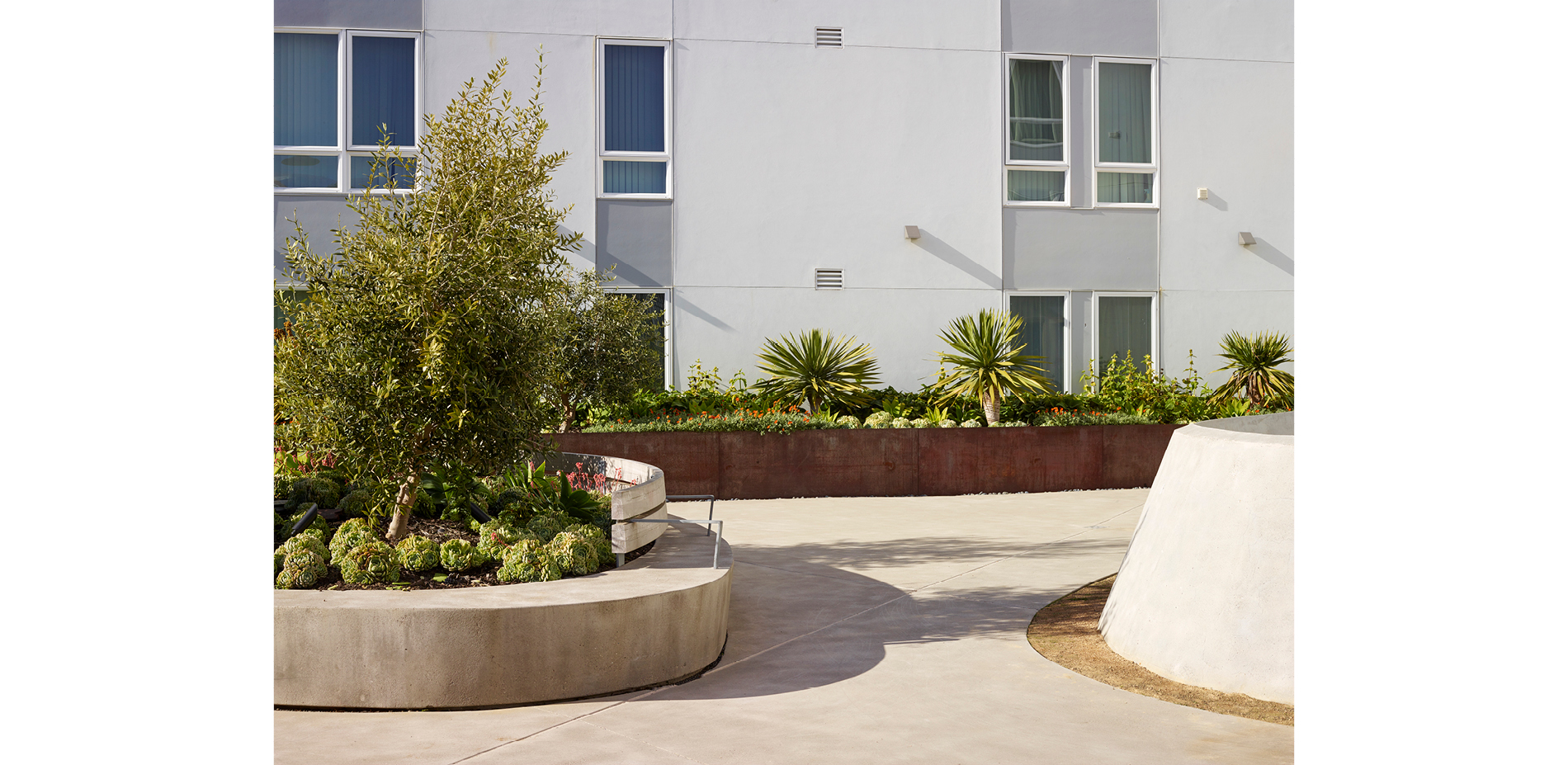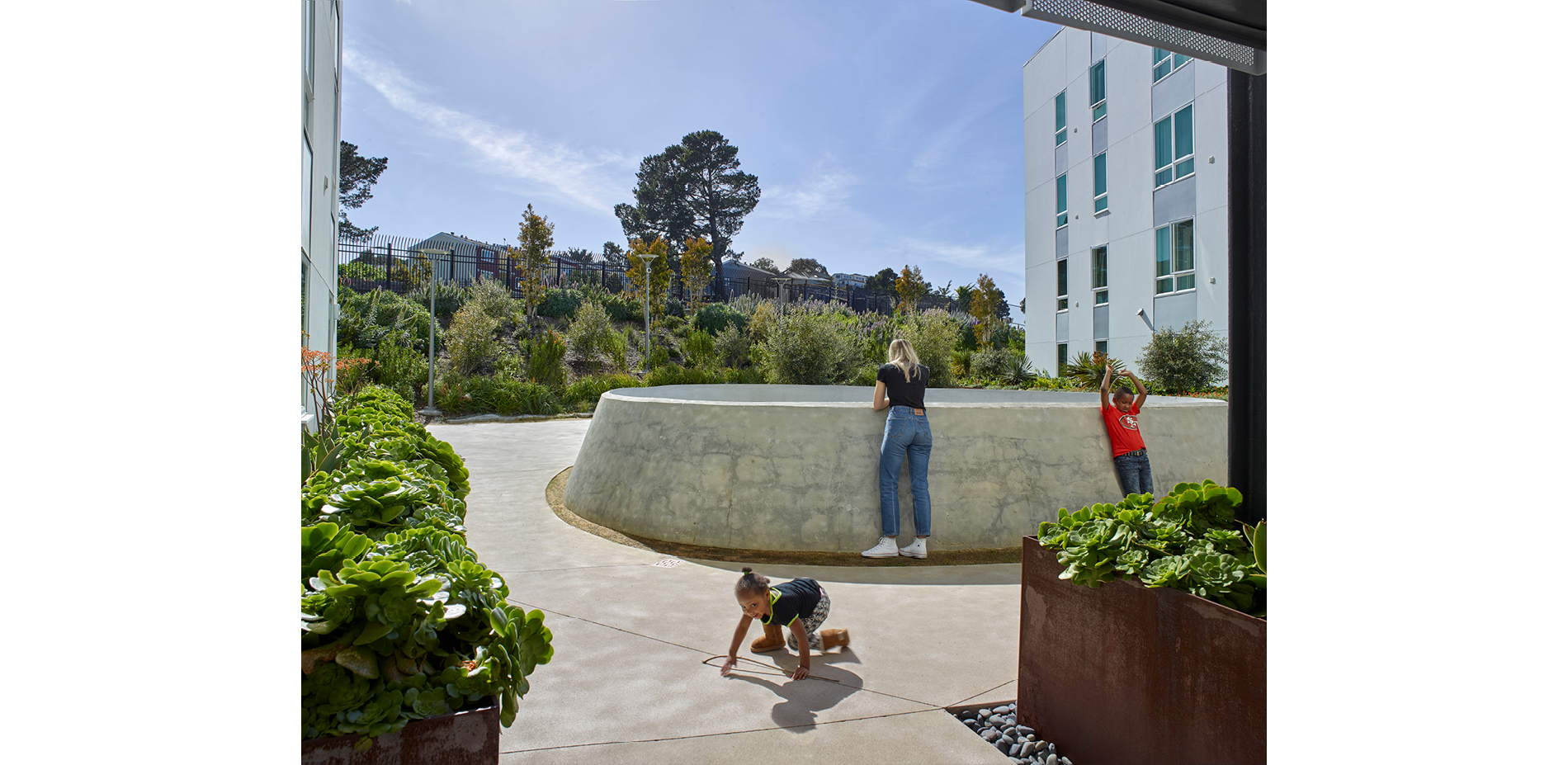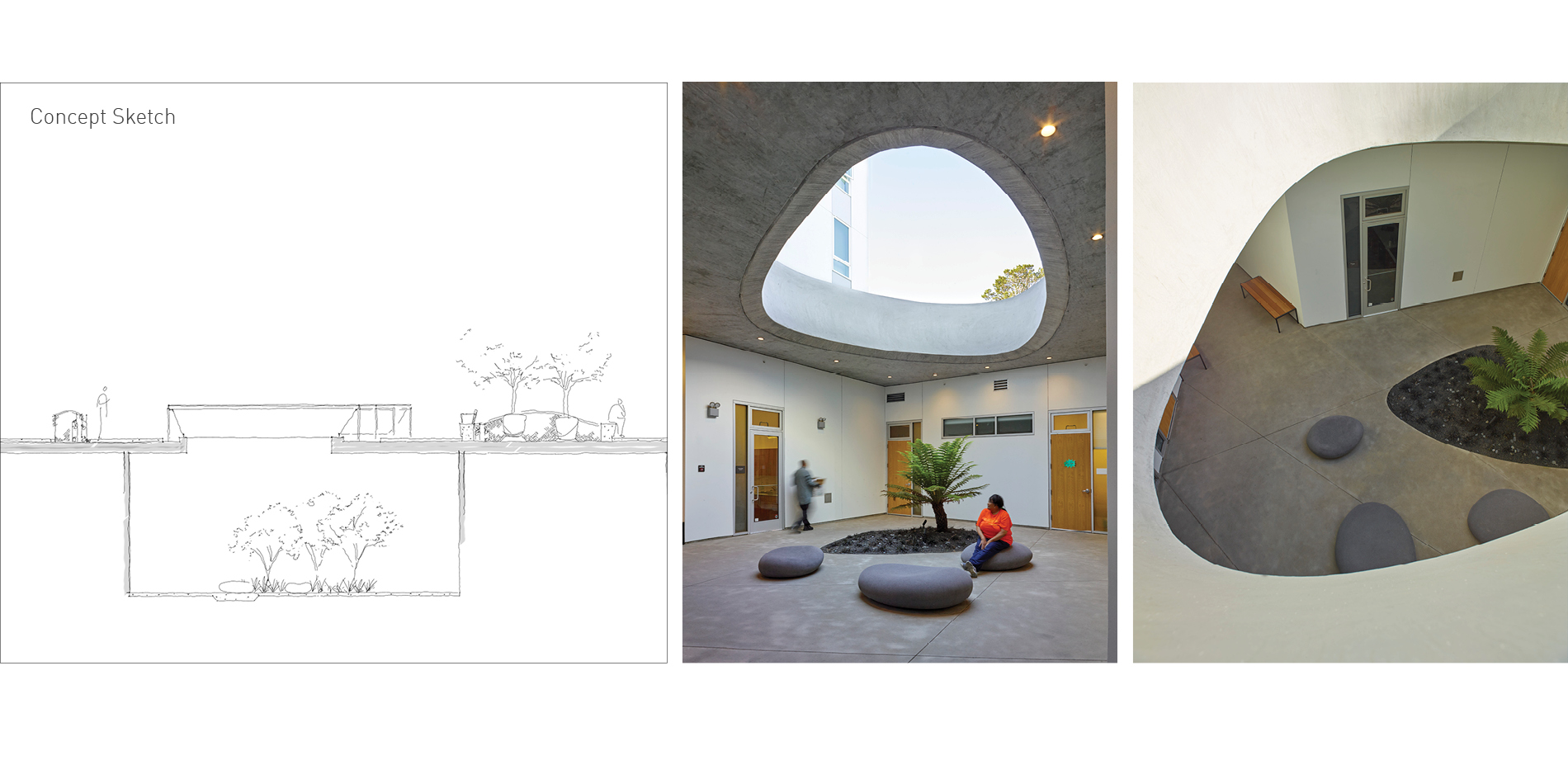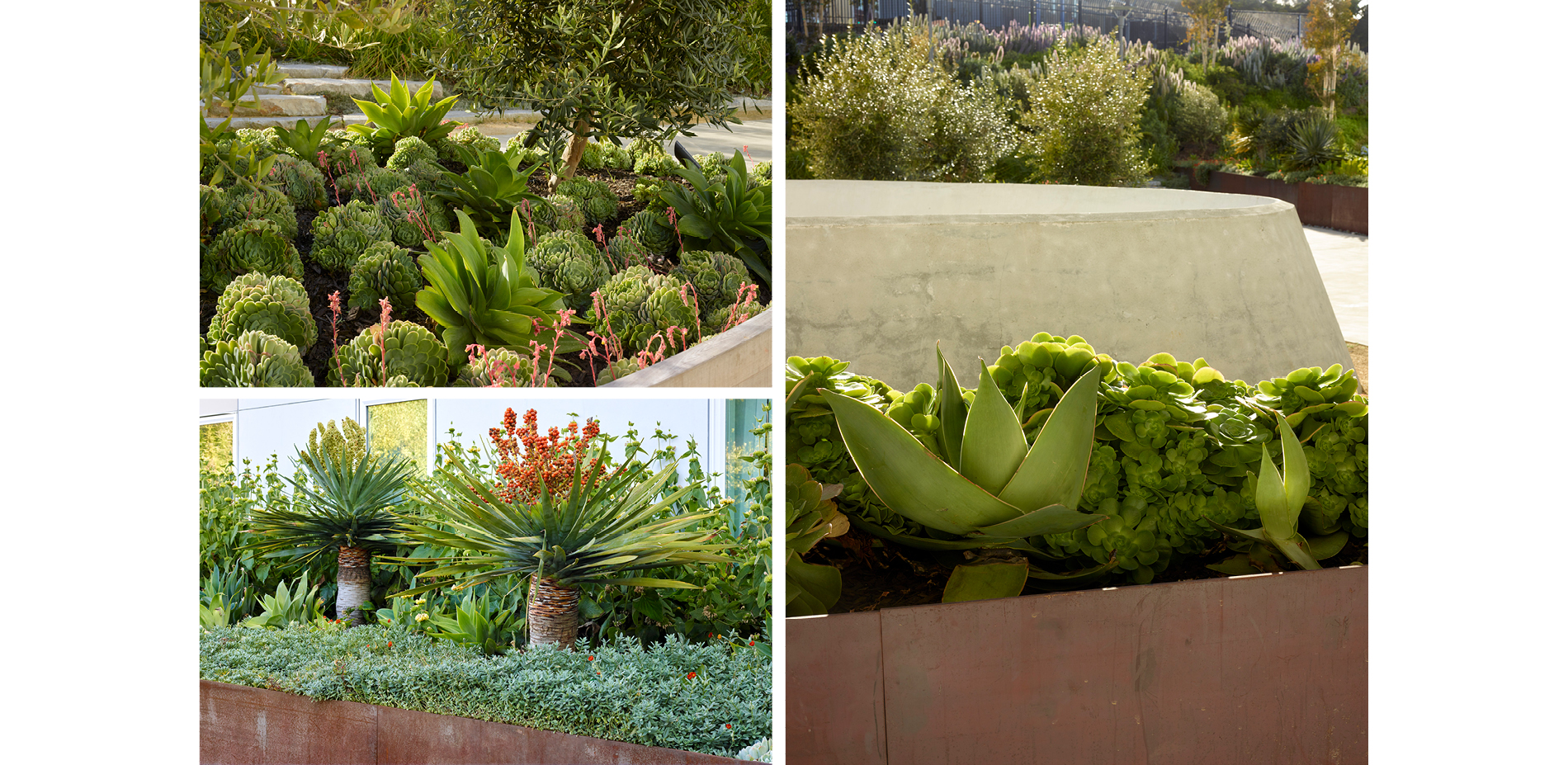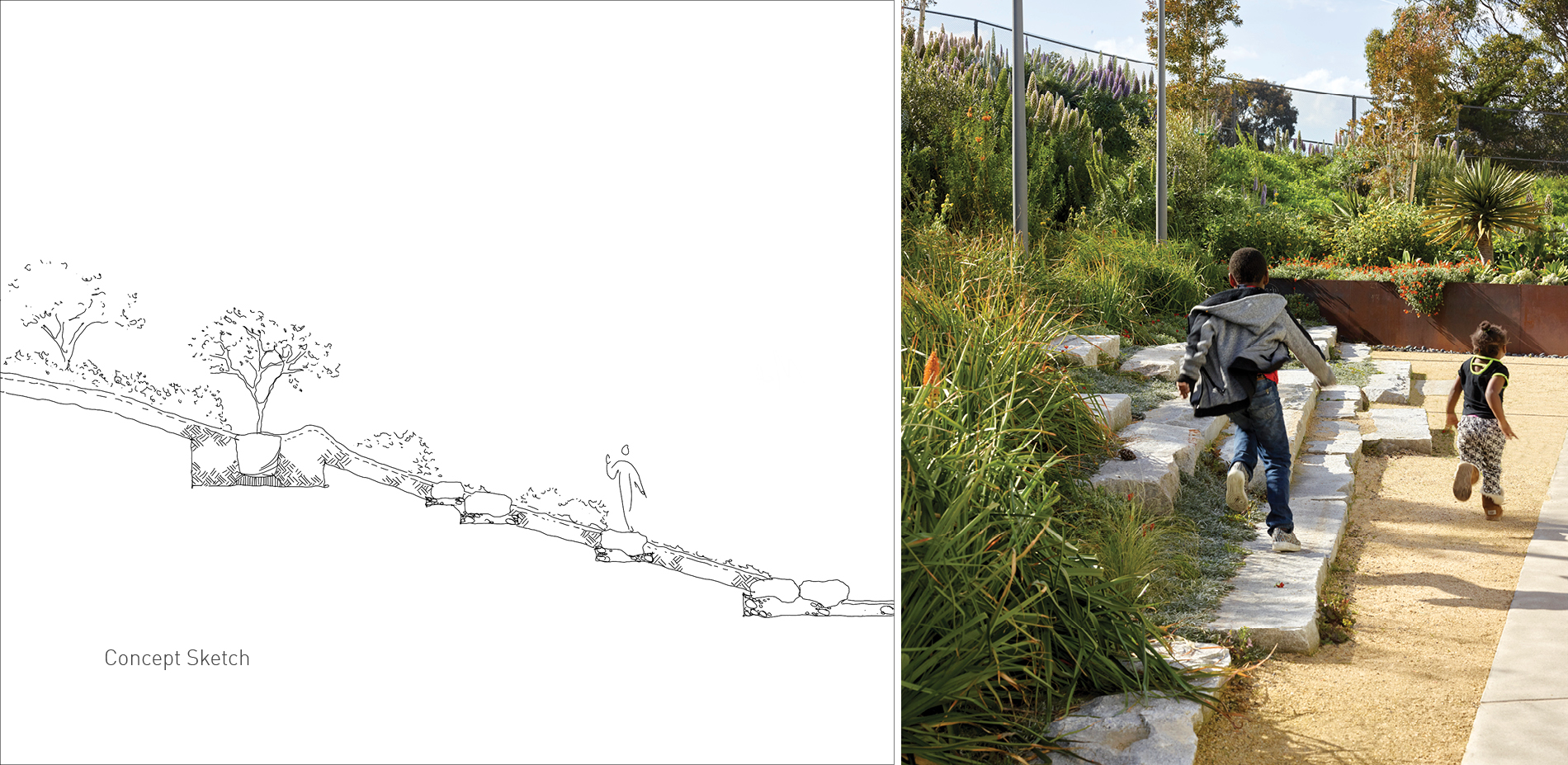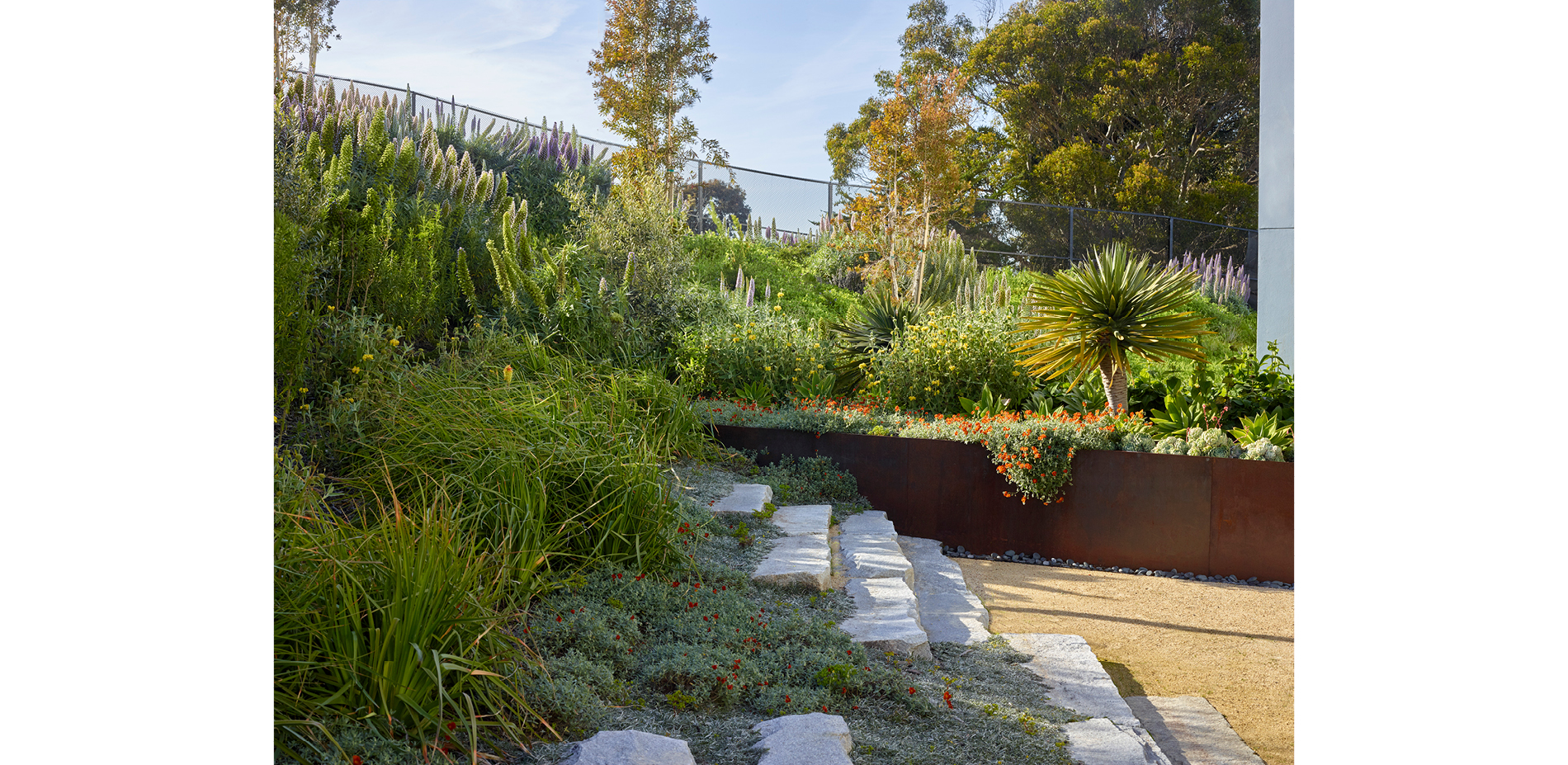901 Fairfax Hunters View
Honor Award
Residential Design
San Francisco, California, United States
Andrea Cochran Landscape Architecture
Set upon unruly terrain, this 72-unit affordable housing project faced challenges of addressing topography and building community within its neighborhood while on a limited budget. Where it succeeds is in alternating moments of surprise and calm— the former through an oculus that admits daylight to a lower-level courtyard, the latter in a serene courtyard that employs the buildings and hillside as a buffer against urban noise; even the site’s retaining wall pulls double-duty, holding back the hillside but also serving as children’s climbing apparatus and outdoor chalkboard. The designers creatively layered levels and carved out contemplative spaces while maintaining site-wide accessibility that contributes to a new image of what public housing could become.
- 2020 Awards Jury
Project Credits
David Baker Architects, Architects
Paulett Taggart Architects, Architects
Carlile Macy, Civil Engineer
KPFF, Structural Engineer
RMA Irrigation, Irrigation Design
HLB Lighting, Lighting Design
Cahill / Nibby, Contractor
Eggli, Landscape Contractor
Project Statement
901 Fairfax in San Francisco is the neighborhood hub for a community that has been vastly underserved in its past. This ambitious project continues the restoration of the Hunters View neighborhood, remediating the decrepit and outdated housing on site as part of a larger master plan. At this site, rebuilding what was dilapidated faced additional challenges of steep topography and an unsafe neighborhood pattern. The project provides welcoming spaces, opportunities to interact with the outdoors and with fellow neighbors, as well as respite from busy urban life. Lush and waterwise planting, custom site furniture, and local materials elevate the landscapes of this new social heart for San Francisco’s Hunters View.
Project Narrative
A Revitalized Neighborhood
901 Fairfax is located on a hillside above the former Hunters Point Naval Shipyard in one of San Francisco’s most rapidly changing and historically under-served neighborhoods. The development is the second of four phases at Hunters View and was funded by the HOPE SF project, a $2 billion initiative to create more than 4,600 new homes in southeast San Francisco. The design team identified innovative and creative approaches to a site with challenging topography, while meeting the client’s primary goal of achieving design efficiency to contain costs for this publicly funded project.
A critical centerpiece of the rebuilt neighborhood, these two blocks contain 72 affordable homes, a community center, and childcare facility, with sweeping views of the San Francisco Bay. The design team worked with limited resources to deliver a number of amenities to the housing site, including a welcoming entry plaza, playground, community center courtyard, and podium courtyard. The design focused on creating connections to the site and community with a hillside restoration of drought tolerant planting and innovative sightline connections across multiple levels. Open pedestrian bridges connect floors of the housing and glass doors open out onto community courtyard space.
Engaging the Community
The design and development team undertook extensive community outreach efforts to gain the trust of the local community. Early meetings with long-time Hunters View residents focused on identifying the residents’ hopes for the project while addressing their concerns. The community was skeptical, having experienced broken promises in the past.
The team identified key issues which were common to most residents, including the desire for community connection and the need for improved security. In order to address the need for connection, the design team focused on creating welcoming spaces that foster interaction with neighbors and are easily accessed by all members of the community. The plazas and courtyards are designed to be secure with all areas being visible—either from the street or from the nearby residences. Outdoor play areas were created within the housing block, in order to help create community and help residents become caretakers of their own environment.
With a shared value to improve the community and quality of life for its residents, the design team saw the end users as the ultimate client. The community process also informed the programming for the community center and child development center, and their associated outdoor spaces.
A Challenging Site with Many Uses
The plaza outside the community center and childcare facility entrances serves as a fulcrum between the two disparate programs. The space is welcoming and inviting, where residents are encouraged to linger after they attend a community event or drop off their child at daycare. The guitar pick shaped bench, constructed of steel and local reclaimed Deodar cedar, is the sculptural center of this space and was originally envisioned as a ‘floating bench’. Several other benches with the same design language are located throughout the space, each offering a slightly different vantage and user experience. The floating bench encircles a grouping of birch trees which sway with the breeze.
As you progress from the public plaza, you enter the semi-public childcare and community center courtyards. The sinuous, guitar pick shapes in the floating bench are echoed in the sand boxes and play surfacing for the nonprofit childcare facility that sits at the heart of the project. About 70 neighborhood infants, toddlers, and preschoolers receive affordable care and a safe place to play at this new facility.
In order to carve outdoor spaces out of the challenging topography, the project required a 20’+ site retaining wall at the back of the site. Rather than being viewed as a constraint, the massive wall was an integral part of the program starting early in the design process. The retaining wall visually connects the adjacent childcare and community center courtyards, slicing through both spaces at an angle which slopes with the grade. In the childcare area, playful climbing holds were inserted into the wall to create a climbing surface, and children are encouraged to use the vertical surface for drawing with chalk. Sandboxes and a natural water play area provide additional amenities for the children to utilize. Planting in the childcare courtyard includes colorful and fragrant species such as Tibouchina and scented geraniums.
Through valuable community input, certain amenities were identified for the community center courtyard. Residents voiced a desire for an outdoor space for barbecues and parties. The design team responded by creating a flexible community center space, where the doors to the multi-purpose room open wide and tables and chairs can be moved outdoors. A custom concrete countertop was also included in the space, so residents can locate a barbecue adjacent to the countertop and serve for a crowd of people. The large stair in the space, which leads to the courtyard on Level Two, doubles as a podium and stage for speakers or small performances.
As you move to the podium courtyard, which is exclusively for residents of 901 Fairfax, the experience changes from the cool shade of sunken courtyards, to being perched within a sunny, wild hillside landscape. The landscape architects wanted users to feel they were immersed in an abundant garden when they were within this space. The planting is a mix of native species that tolerate the serpentine hillside, mixed with other drought tolerant and resilient species.
Salvaged historic San Francisco granite curbs as low walls and casual seating further links this project to its site.
The most striking feature of the design is a central oculus lightwell that brings sunlight down to the wellness center on the first floor. The courtyard and Oculus are also viewed from the residential units and pedestrian bridges above. Early in the design process, the landscape architects proposed that the architects incorporate the same guitar pick shape used in the landscape into the shape for their lightwell. The resulting guardrail design was a collaboration that celebrated this repeated form and set up a dialogue between the interior and the exterior. The sinuous shape repeats the common design thread that ties together the series of wooden benches milled from local cedar trees and raised concrete planters. Depending on the time of day, you will find kids riding their bikes around the Oculus and raised planter, or a resident enjoying a quiet moment on the hillside curbstones seats. Says one relocated resident, who shares a three-bedroom apartment with her husband and three grandchildren, “We are just across the street, but it’s totally different. It’s so relaxing, so peaceful. It’s not so stressful.”
Products
- Glacier DRS
- Concreteworks
- Greenform LLC
- Landscape Forms
- Balco
- 3Form
- Toro
- Rainbird
- Dura-Edge
- Headrush Technologies
- Creative Pipe, Inc.
- Goric
- American Hydrotech
- Ackerstone Pavers
- American Soil and Stone
- Lyngso Garden Materials, Inc.
- Bega
- Selux
Plant List:
- Betula jacquemontii / Jacquemontii Birch
- Dicksonia antarctica / Tasmanian Tree Fern
- Dracaena draco / Dragon Tree
- Melaleuca quinquenervia / Cajeput Tree
- Olea europaea ‘Swan Hill’ / Swan Hill Olive
- Tibouchina urvilleana / Princess Flower
- Aeonium canariense / Aeonium
- Agave attenuata / Foxtail Agave
- Aloe striata / Coral Aloe
- Echium candicans / Pride of Madeira
- Helianthemum nummularium 'Henfield Brilliant' / Henfield Brilliant Rock Rose
- Kniphofia uvaria 'Flamenco’/ Flamenco Red Hot Poker
- Lomandra hystrix 'Tropic Belle' / Tropic Belle Mat Rush
- Lomandra longifolia 'Breeze’ / Dwarf Mat Rush
- Olea europaea 'Little Ollie' / Little Ollie Olive
- Phlomis fruticosa / Jerusalem Sage
- Phlomis russelliana / Jerusalem Sage
- Dymondia margaretae / Dymondia
- Echeveria elegans / Mexican Snowball
- Ophiopogon planiscapus / Black Mondo Grass


